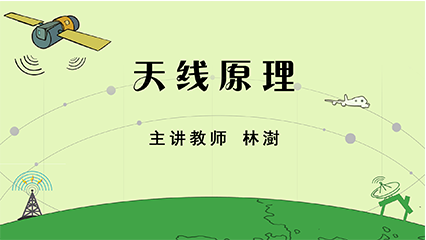
当前课程知识点:实用英语写作 > 第三章 应用文写作技巧 > 3.2 英文履历: 双语形象的敲门砖 > 英文履历的视频+讲稿+课件
Hi, there, I am Judy; welcome to the video lesson for resume.
A good resume needs to show personal characteristics, advantages and potential, which also could be gained the recruiter’s attention. The information provided in resume should closely related to the position you applied for, which needs to strengthen your advantages, highlight the temperament most suitable for the applied position. After all,a good resume improves the opportunity to enter the interview.
Today,the objectives are: types, structure and an example of resume.
Before you start your resume, ask yourself two questions:
1. If you were the recruiter, what information would you like to see?
2. Why you? Why does the company select you?
Brainstorming for a moment, you’ll find that it's important for recruiters to get the following information effectively: Objective, qualifications, special skills, personal information, education, work experience, social activities, rewards, etc.
How do you arrange them? Generally speaking, this is a good example you can follow:
When you write your resume, here are two things make you stand out:
1. Highlight your advantages. You need to remember that the advantages should relate with the position you applied for, which helps you to leave a profound impression for the recruiter.
2. Break the task into parts. Try to remember that group each part makes your resume easy to read.
In general, there are 3 types of resume in our daily use:
Functional resume, this type is suitable for people who do not have much more work experiences. It focuses on the skills which you learned from studies, jobs, activities, or volunteer work.
Chronological resume, which usually can be used by people with a lot of experiences. The whole work history can be arranged in the order of time sequence. While writing in this type, you need to write your position title, place of employment, and how long you worked there.
Hybrid resume (it combines both two types above.)
No matter what type of resume you choose, these three points are the core of a resume: Personal information, Education, Qualifications and Skills.
After the types of resume, we need to see the format of resume. Here are 2 formats of resume as follows:
Before you start writing your resume, there are six dos and six don 'ts you need to keep in mind.
6 Dos:
1. “Hook ” your readers. Try to attract your reader‘s attention.
2. Highlight your strengths, which is your selling point, this part needs to be well-written.
3. Write concise and easy to read.
4. Support your objective. Any information should be relevant to the objective, or it is useless.
5. Answer the question that employer has asked. It is very important thing to respond to the questions.
6. Keep your resume less than two pages, and you’d better keep them in one page.
6 Don’ts:
1. Don’t lie. Lying completely fails you.
2. Don’t use I start. Because you are the only subject in the whole resume.
3. Don’t write long and complex sentences\lines.
4. Don’t include information that is not relevant to the objective.
5. Don’t vague. Say something clearly.
6. Don’t include too “personal” information. No needs to mention too private things.
Then, let’s move on step by step. 1, we start from the first part: Personal Information, which includes (Name\Cell phone\E-mail\Home address, etc., for instance:
2. Job Objective part needs to be written down your job objective and position wanted in a concise and specific way, for example:
3.Education typically includes information about school attended, major, degree, starting and ending time, and courses related to the position. Education year should be narrated from the end, which means the most recent education should be put in front of this part. Such as:
4. Work Experience is important in your resume: be sure to write the position, responsibilities, abilities and achievements of each work unit as well as the starting and ending dates in chronological order, action verbs should be chosen to convey information effectively. For example:
5. As for awards,you can write like this one:
Qualifications and Special Skill can be written separately, and which also could be put together, for example:
6. Social Activities:You need to write the year and year of participation in the social activities, the job responsibilities undertaken and the achievements obtained.
Here comes a good Sample:
You will find that it’s not that hard after you take this lesson, and now, it’s your time to write your own resume, and I hope you can write well.
So much for this lesson, thank you for your appreciation. Until next time…
-1.1 “好”词那么多,我该选哪个?
--视频+讲稿+课件
--课后讨论
--随堂测试
-1.2.1 "好"句那么多,我该选哪个?
--视频+讲稿+课件
--课后讨论
--随堂测验
-1.2.2 "句子"问题那么多,我能逃过几个?
--视频+讲稿+课件
--课后讨论
-- 随堂测验
-1.3.1 必要的连接词,你会用吗?
--视频+讲稿+课件
--课后讨论
--随堂测验
-1.3.2 八问搞定主题句
--视频+讲稿+课件
--课后讨论
-- 随堂测验
-1.3.3 SWB段落扩展法
--视频+讲稿+课件
--课后讨论
-- 随堂测验
-1.3.4 段落内部的亲戚关系
--视频+讲稿+课件
--课后讨论
--随堂测验
-2.1 英语短文结构:层次清楚三部分
--视频+讲稿+课件
--随堂测验
--课后讨论
-2.2 记叙文:叙述得当有办法
--视频+讲稿+课件
--随堂测验
--课后讨论
-2.3 描写文:描写生动有技巧
--视频+讲稿+课件
--随堂测验
--课后讨论
-2.4.1 说明文:举例法
--视频+讲稿+课件
--随堂测验
--课后讨论
-2.4.2 说明文:过程分析法
--视频+讲稿+课件
--随堂测验
--课后讨论
-2.4.3 说明文:因果分析法
--视频+讲稿+课件
--随堂测验
--课后讨论
-2.4.4 说明文:比较和对照法
--视频+讲稿+课件
--随堂测验
--课后讨论
-2.5 议论文:论证充分有力度
--视频+讲稿+课件
--随堂测验
--课后讨论
-3.1 英文书信:交流必备小常识
--随堂小测验
--课堂讨论
-3.2 英文履历: 双语形象的敲门砖
--课程小测验
--课堂讨论
-3.3 个人陈述:如何推销你自己
-- 个人陈述视频+讲稿+课件
--随堂小测验
--课程讨论
-3.4 竞选演说:如何表达更出色
-- 竞选演说视频+讲稿+课件
--随堂小测验
--课程讨论
-3.5 海报:如何宣传更有效
--随堂小测验
--课程讨论
-4.1 小白三连问:考什么?怎么考?怎么评?
--视频+讲稿+课件
--随堂测验
--课后讨论
-4.2 提纲作文:让咱写啥就写啥!
--视频+讲稿+课件
--随堂测验
--课后讨论
-4.3 话题作文:各有利弊,择其一!
--视频+讲稿+课件
--随堂测验
--课后讨论
-4.4 格言作文:大道理且听我慢慢道来!
--视频+讲稿+课件
--随堂测验
--课后讨论
-4.5 图示作文:涂涂画画终归还是谈热点!
--视频+讲稿+课件
--随堂测验
--课后讨论
-4.6 书信作文:亲爱的,我有话对你说!
--视频+讲稿+课件
--随堂测验
--课后讨论
-4.7 其他作文:百变不离其宗,说清楚即可!
--视频+讲稿+课件
--随堂测验
--课后讨论
-4.8六级写作进阶:请放大招!
--视频+讲稿+课件
--随堂测验
--课后讨论
-5.1 小白三连问:考什么? 怎么考?怎么评?
-- 视频+讲稿+课件
--课后讨论
--随堂测验
-5.2 考研小作文:“三步走”和“五要素”
--视频+讲稿+课件
--课后讨论
--随堂测验
-5.3 大作文:话题归类找模板
--视频+讲稿+课件
--课后讨论
--随堂测验
-6.1考什么:考核要求和技能
--课堂小测验
--课程讨论
--课堂讨论
-6.2 大作文:论述观点有技巧
--随堂小测验
--课程讨论
-6.3 小作文:描述信息有重点
--随堂小测验
--课程讨论


